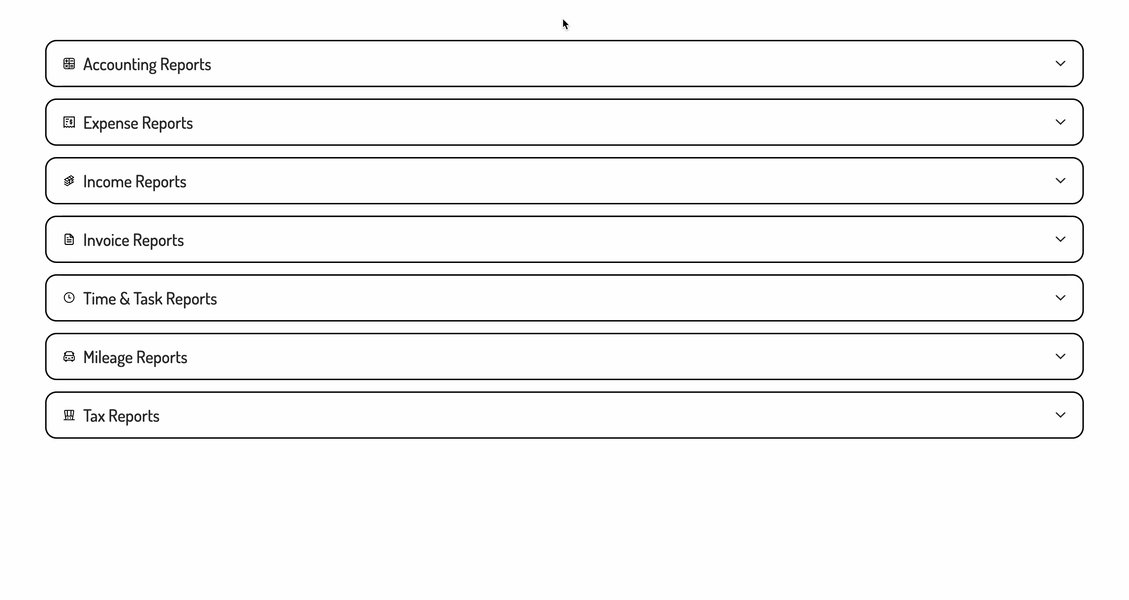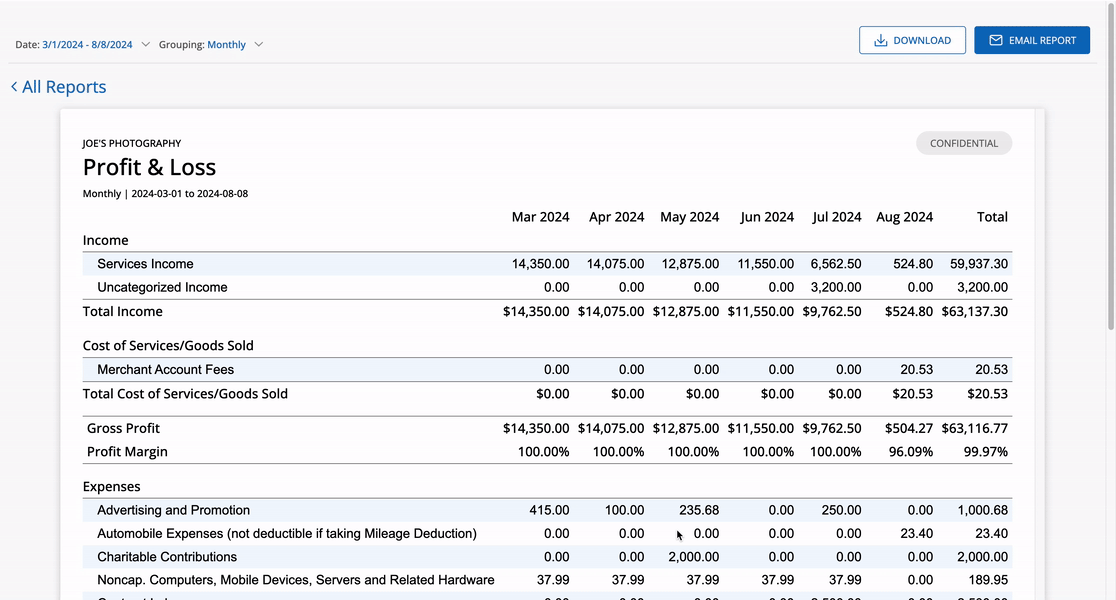Financial Statements
Hurdlr's Financial Statements API makes it easy for you to provide your users with the financial reporting that they need.

How it works
Whether or not you are leveraging one of our native integrations, the Hurdlr API automatically keeps a General Ledger behind the scenes for all of your users. While your users may never want to look at a GL or Chart of Accounts, the beauty of the behind-the-scenes GL is that they get all the financial reporting that they could ever need, without the burden of having to manage a General Ledger or understand bookkeeping.
Connecting your data sources
Hurdlr's numerous native integrations make it easy for you to feed your users' data into the Hurdlr API. Take a look at our docs for getting your data sources connected for an overview on how to get this set up.
Displaying reports
If you'd like to display a dashboard that allows your user to generate interactive reports, you can simply embed Hurdlr's Report Dashboard. Or, you can display one of Hurdlr's Embedded reports:
a) Balance Sheet component
b) Cash Flow Statement component
c) Profit & Loss component
d) Trial Balance component
Interactive Financial Statements
All Embedded Financial Statements are interactive; users are able to drill-down into specific General Ledger accounts and specific time frames to see and modify the underlying transactions that drive the balance on the report. This feature provides robust workflows for business owners and bookkeepers to manage their books.
Customizing reports to match your branding
Hurdlr's API team can quickly customize financial reports to match your branding. Please follow the instructions on customizing the embedded UI to match your branding.

Programmatic access
Hurdlr makes all of its financial reports available to you programmatically in four different formats:
a) HTML: most useful if you would like to display the report to your user inside your product, e.g. if you want to show them a preview before they download the final version
b) PDF: most useful if your user wishes to download the report or share the report with partners
c) XLS: most useful if the user wants to review their business's trends over time (e.g. for analyzing a month-over-month report)
d) JSON: most useful if you would like to ingest raw report data to design your own custom reports
Each report's API is documented in our API reference with more details.
Updated 4 months ago
Check out the available Income, Expense, and Accounting reports.
